Birds
30/09/19
Paul Bright Thomas was in his Area 4 garden and had 8 Swallow low over heading S and 90 Meadow Pipits in groups over heading SSE in about 20 mins
29/09/19
Malcolm Dunmore saw a Little Egret in the Emm by Meadow Road Bridge in Area 4 along with a Pheasant in his rose bed this morning .
28/09/19
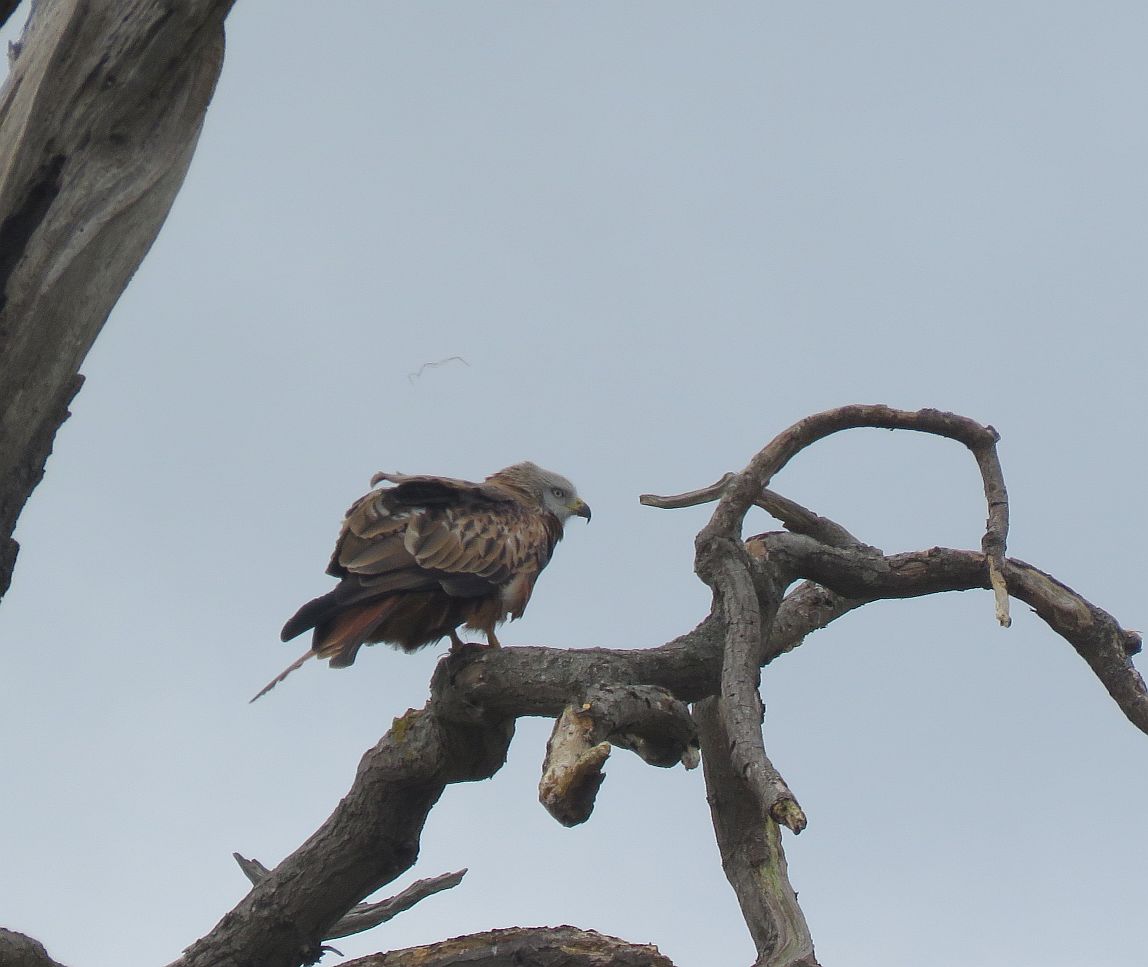 In Area 1 at Ludgrove a Red Kite was perching on the usual dead tree in the cow fields, also in the fields were Jackdaw, Carrion Crow, Jay, Magpie, Robin, Blue Tit, Great Tio and a calling Chiffchaff.
Meanwhile in Area 4 a Raven was seen flying low S over his garden at midday by Paul Bright Thomas.
In Area 1 at Ludgrove a Red Kite was perching on the usual dead tree in the cow fields, also in the fields were Jackdaw, Carrion Crow, Jay, Magpie, Robin, Blue Tit, Great Tio and a calling Chiffchaff.
Meanwhile in Area 4 a Raven was seen flying low S over his garden at midday by Paul Bright Thomas.
26/09/19
A female Tawny Owl was heard calling in Area 7 at 05:15 by Paul O'Neill.
25/09/19
More hirundine movement over Area 10 with 50 + Swallow flying south over the landfill and 200+ House Martin hawking over the lake and the landfill seen by Trevor Guyatt. A Kestrel was hovering over the landfill seen by Brian Bennett.
24/09/19
Several House Martin and Swallow were seen over Area 10 with a Kestrel at the back of the landfill by Jenny Vaughan.
23/09/19
In the darkness this morning at 05:30 a Grey Heron flew over my Area 5 garden calling.In Area 10 a Snipe was seen on the Lavells Lake wet meadow by Richard Marsh.
20/09/19
Around the Dinton Activity Centre in Area 10 a Cetti’s Warbler was heard singing by Steve Lynch.Several Chiffchaff were also calling from the bushes.
19/09/19
A Hobby , Peregrine and Sparrowhawk were together over Area 10 seen by Fraser Cottington.
18/09/19
Approx 20 Swallow were seen flying over Area 10 by Peter Scudamore.
17/09/19
At 16:00 a Grey Heron was seen flying over Woosehill Roundabout in Area 6.
15/09/19
The Willow trees at the edge of the wet meadow in Area 10 were very productive for Anne Cronin. Seen were Nuthatch , Treecreeper , Willow Warbler , Chiffchaff , Goldcrest , Blue Tit , Great Tit , Coal Tit and Long-tailed Tit .
14/09/19
Fraser Cottington was in Area 10 and saw a late returning Swift heading South over the Picnic Area and 5 Blackcap in the Car Park field with 2 Skylark over heading East.
12/09/19
Autumn migration is in full swing. In Area 4 Paul Bright Thomas had a Meadow Pipit heading S, over his garden. In Area 10, 50+ Swallow were seen heading south by Richard Marsh.
09/09/19
A Marsh Harrier was seen flying west over the car park field in Area 10 by Tim James.
08/09/19
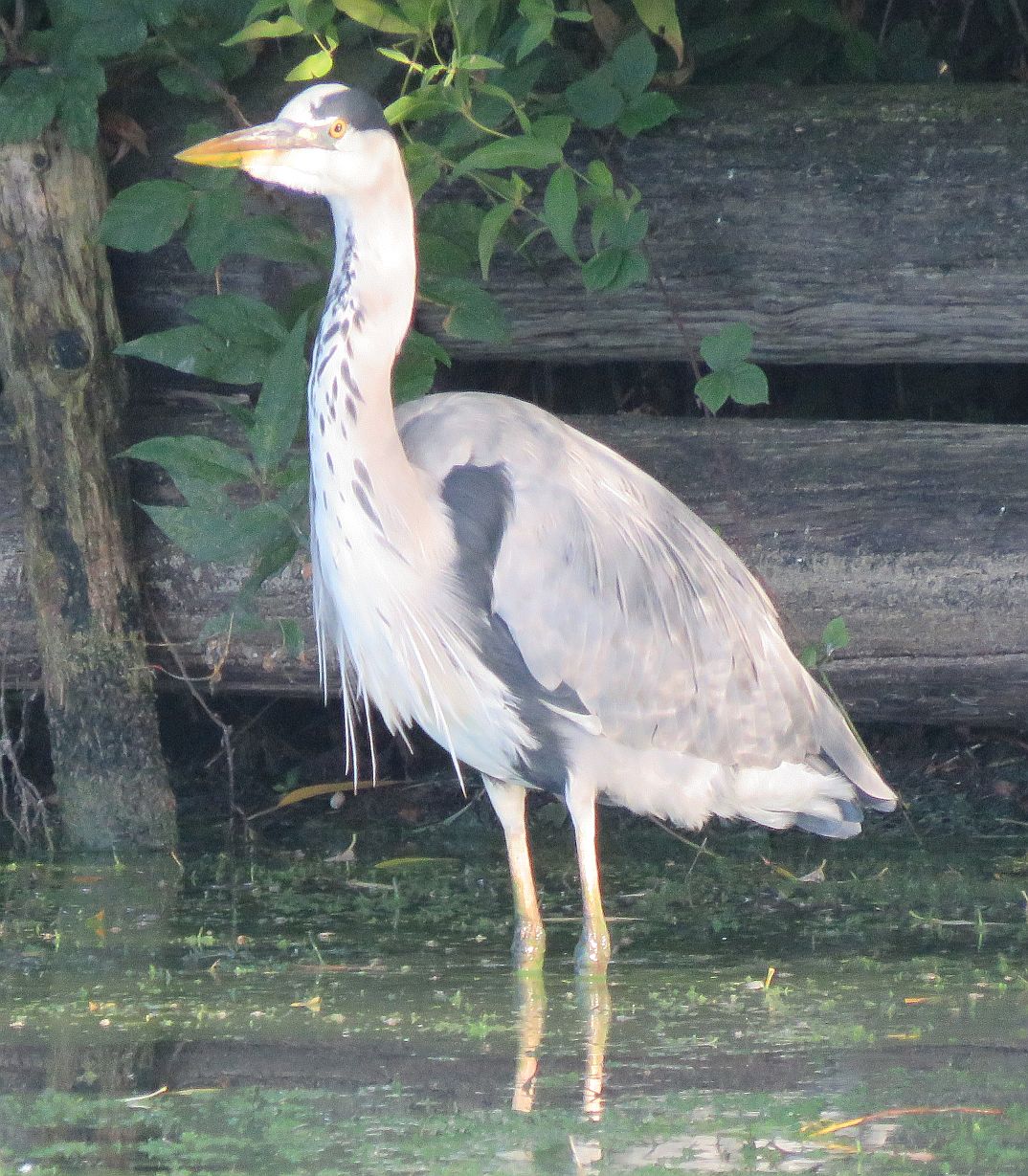 Another bumper day in the sun at Area 10 this morning. A Grey Heron was by the Dinton Activity Centre, waiting for its breakfast.
Another bumper day in the sun at Area 10 this morning. A Grey Heron was by the Dinton Activity Centre, waiting for its breakfast. 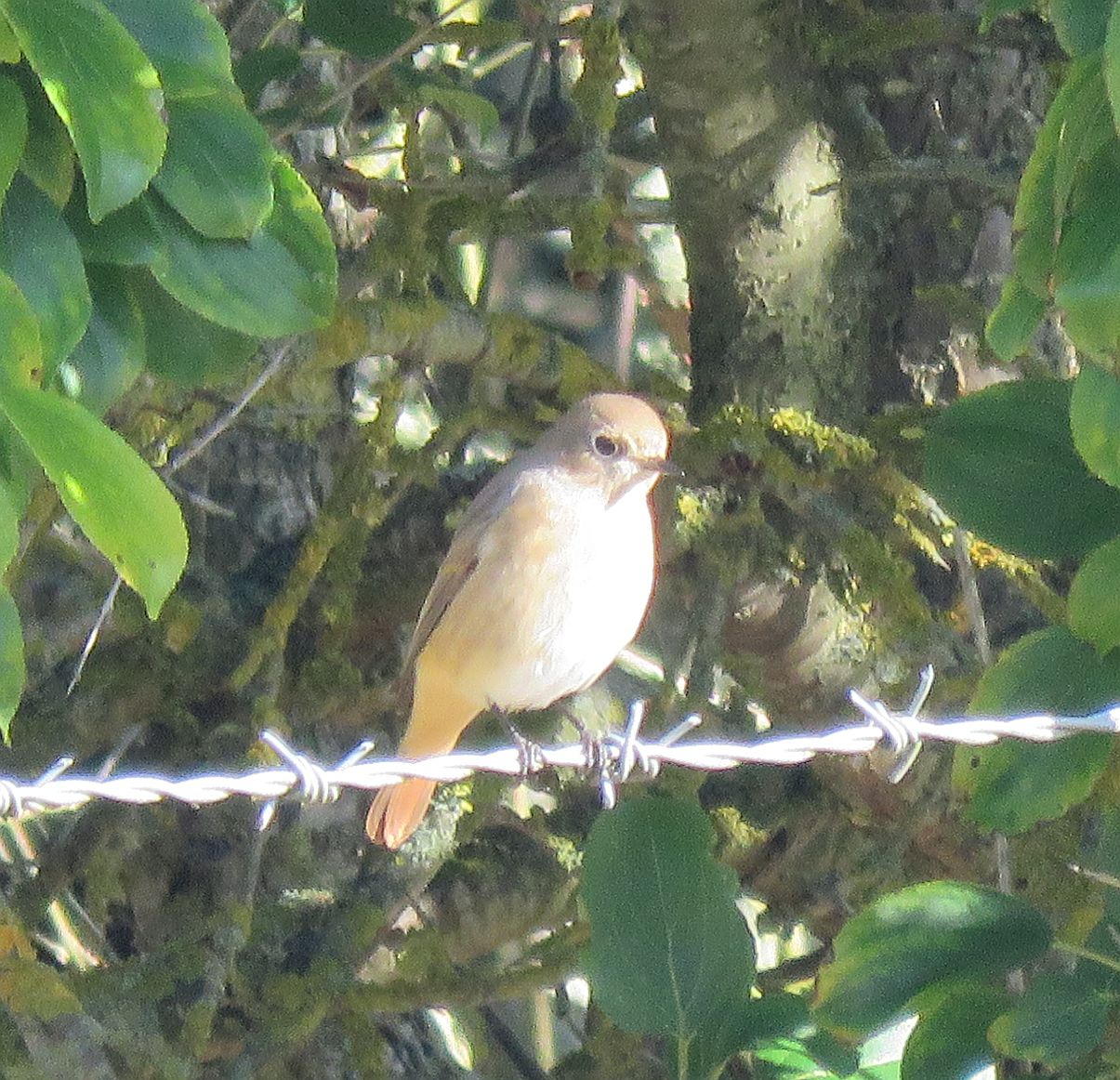 Meanwhile at the Bottom of the Car Park field a Juvenile Redstart was on the fence and in and around the Hawthorn bush at the bottom left along with numerous male and female Blackcap ,a flycatching Spotted Flycatcher ,calling male Chiffchaff, a Whitethroat ,2 Willow Warbler and a
Meanwhile at the Bottom of the Car Park field a Juvenile Redstart was on the fence and in and around the Hawthorn bush at the bottom left along with numerous male and female Blackcap ,a flycatching Spotted Flycatcher ,calling male Chiffchaff, a Whitethroat ,2 Willow Warbler and a  Garden Warbler. A steady flow of Swallow and House Martin were flying South over the field with a passage of Meadow Pipit .
Garden Warbler. A steady flow of Swallow and House Martin were flying South over the field with a passage of Meadow Pipit .
07/09/19
 A Coal Tit appeared at my Area 5 garden feeders this morning along with the usual Blue Tit , Great Tit , Robin , Wood Pigeon , Collared Dove , Starling , Magpie and Nuthatch . In Area 1, Swallow were moving through the fields around Ludgrove with at least 20 seen. The School goalposts proved popular with a max of 15 resting on the crossbar.2 Ring necked Parakeet were calling and moving between the trees.In Area 10 a Redstart was seen at the bottom of the Car Park field by Lynn Mann.
A Coal Tit appeared at my Area 5 garden feeders this morning along with the usual Blue Tit , Great Tit , Robin , Wood Pigeon , Collared Dove , Starling , Magpie and Nuthatch . In Area 1, Swallow were moving through the fields around Ludgrove with at least 20 seen. The School goalposts proved popular with a max of 15 resting on the crossbar.2 Ring necked Parakeet were calling and moving between the trees.In Area 10 a Redstart was seen at the bottom of the Car Park field by Lynn Mann.
05/09/19
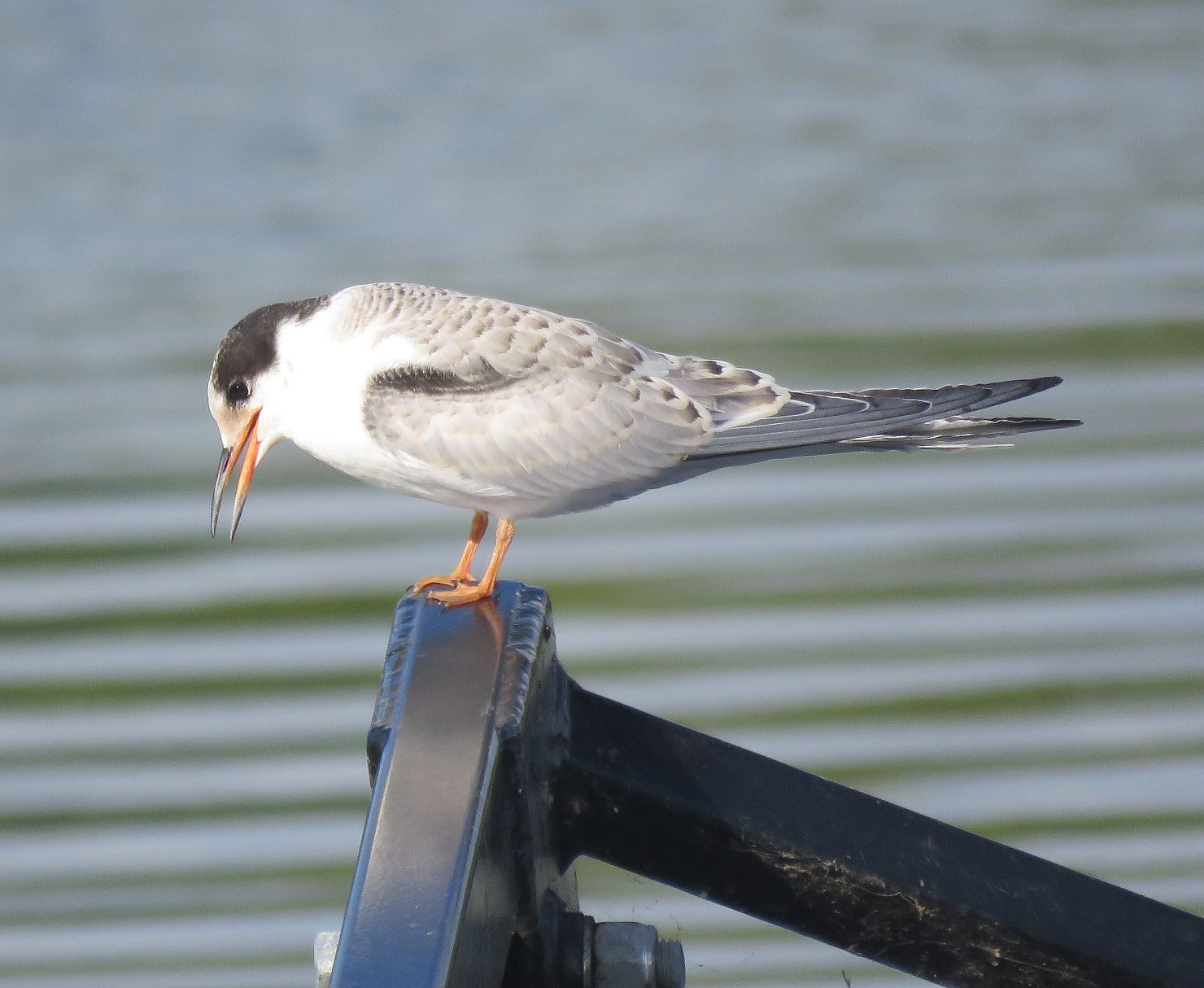 On the "Beach" in Area 10 by the Emm Brook at the Dinton Activity Centre, Richard Marsh saw a Wheatear and a Grey Wagtail was on the pontoon. Later an Adult and Juvenile Common Tern were also on the pontoon. The juvenile was constantly and noisily calling. A Grey Wagtail was also seen on the pavement by Woosehill Roundabout in Area 6 by Sean Stevenson.
On the "Beach" in Area 10 by the Emm Brook at the Dinton Activity Centre, Richard Marsh saw a Wheatear and a Grey Wagtail was on the pontoon. Later an Adult and Juvenile Common Tern were also on the pontoon. The juvenile was constantly and noisily calling. A Grey Wagtail was also seen on the pavement by Woosehill Roundabout in Area 6 by Sean Stevenson.
03/09/19
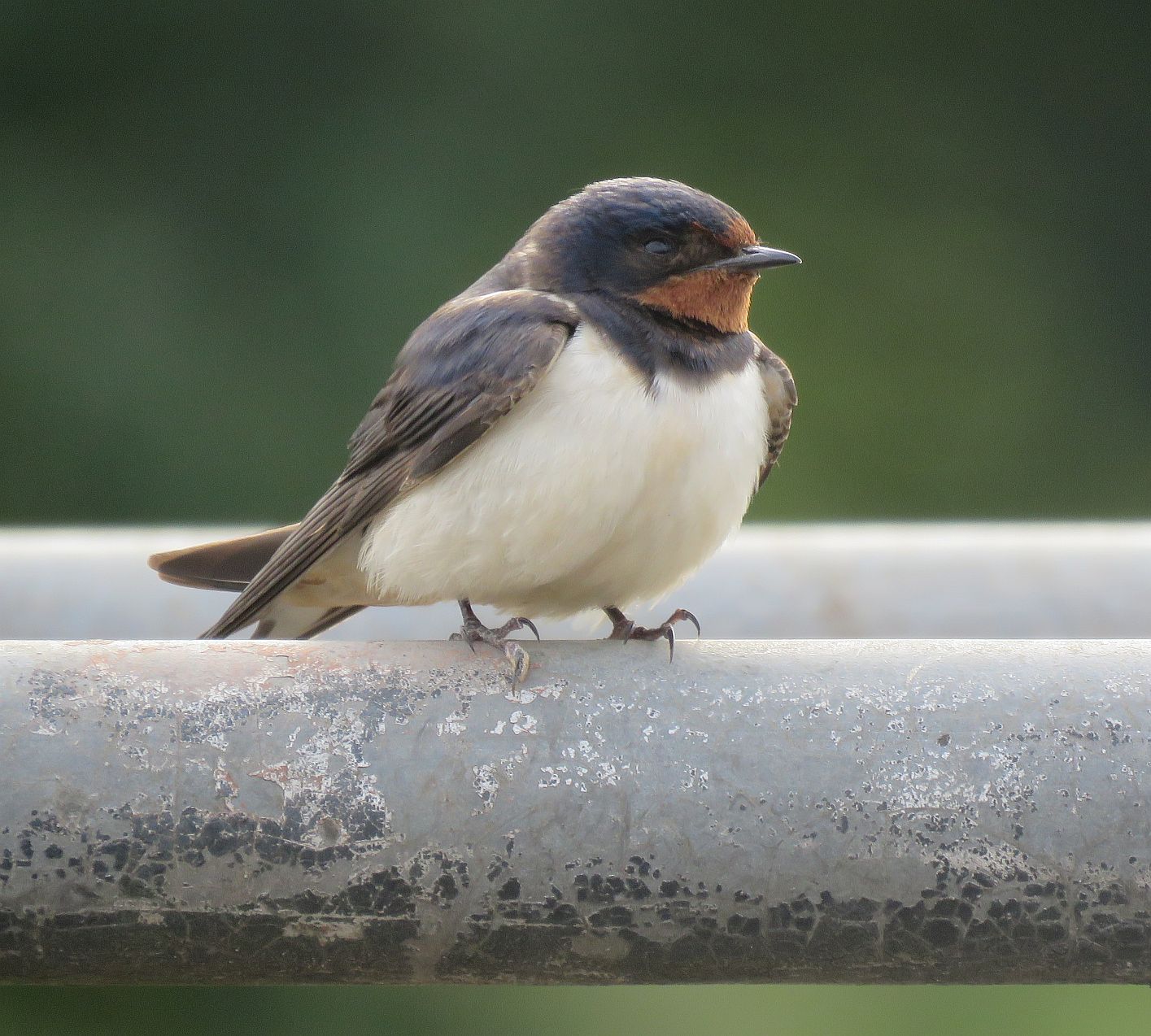 Hirundines were on the move this morning across the fields and skies in Area 2. At Ludgrove, a mixed flock of 50+ Swallow and House Martin were busy feeding when one landed on the Cows hay feeders infront of me. This was then joined by a Juvenille.
Hirundines were on the move this morning across the fields and skies in Area 2. At Ludgrove, a mixed flock of 50+ Swallow and House Martin were busy feeding when one landed on the Cows hay feeders infront of me. This was then joined by a Juvenille. . A Little Owl was heard calling from the trees. Meanwhile in Area 10, Fraser Cottington also had a steady trickle of Hirundines moving over the Car Park Field. The 1st winter male Redstart was still present, along with Chiffchaff and Blackcap . A female Kestrel and a Green Woodpecker were also seen.
. A Little Owl was heard calling from the trees. Meanwhile in Area 10, Fraser Cottington also had a steady trickle of Hirundines moving over the Car Park Field. The 1st winter male Redstart was still present, along with Chiffchaff and Blackcap . A female Kestrel and a Green Woodpecker were also seen.
02/09/19
 On my arrival this morning in Area 10 by the Emm Brook at the Dinton Activity Centre I was greeted on the "Beach" by John and Fraser and a superb Dunlin which stayed put despite the Dog Walkers. Also seen were 4 Pied Wagtail a Grey Wagtail on the pontoon and a flyby Kingfisher .
On my arrival this morning in Area 10 by the Emm Brook at the Dinton Activity Centre I was greeted on the "Beach" by John and Fraser and a superb Dunlin which stayed put despite the Dog Walkers. Also seen were 4 Pied Wagtail a Grey Wagtail on the pontoon and a flyby Kingfisher .  In the Car Park field the 1st winter male Redstart was still present, along with a Spotted Flycatcher , Chiffchaff , and Blackcap . A Hobby was seen flying over by Richard Marsh and a Whitethroat by John Sheridan.2 House Martin also flew over.
In the Car Park field the 1st winter male Redstart was still present, along with a Spotted Flycatcher , Chiffchaff , and Blackcap . A Hobby was seen flying over by Richard Marsh and a Whitethroat by John Sheridan.2 House Martin also flew over.
01/09/19
 At 03:30 a calling Tawny Owl was heard, down by the river in Area 5, to the rear of Morrisons.At the bottom of the Car Park field in Area 10, 4 Redstart an adult summer male, a 1st winter male and 2 juvenile female on the fences and in the bushes seen by Trevor Guyatt and Fraser Cottington. Also seen were Spotted Flycatcher , Chiffchaff , Lesser Whitethroat , Whitethroat , Garden Warbler , Willow Warbler and numerous Blackcap . 3 Kestrel , were circling over the field and a Yellow Wagtail was heard calling, flying over.
At 03:30 a calling Tawny Owl was heard, down by the river in Area 5, to the rear of Morrisons.At the bottom of the Car Park field in Area 10, 4 Redstart an adult summer male, a 1st winter male and 2 juvenile female on the fences and in the bushes seen by Trevor Guyatt and Fraser Cottington. Also seen were Spotted Flycatcher , Chiffchaff , Lesser Whitethroat , Whitethroat , Garden Warbler , Willow Warbler and numerous Blackcap . 3 Kestrel , were circling over the field and a Yellow Wagtail was heard calling, flying over.













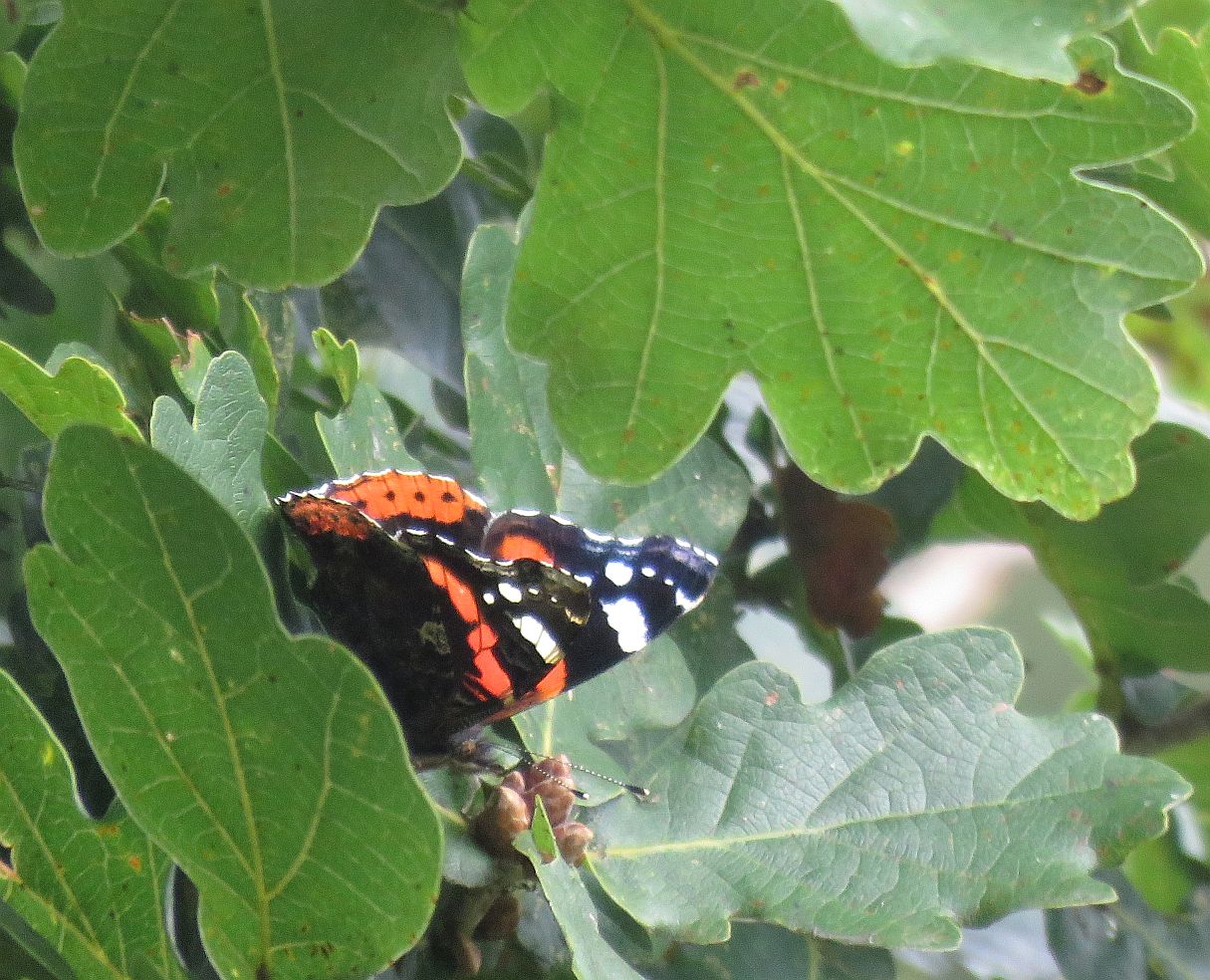


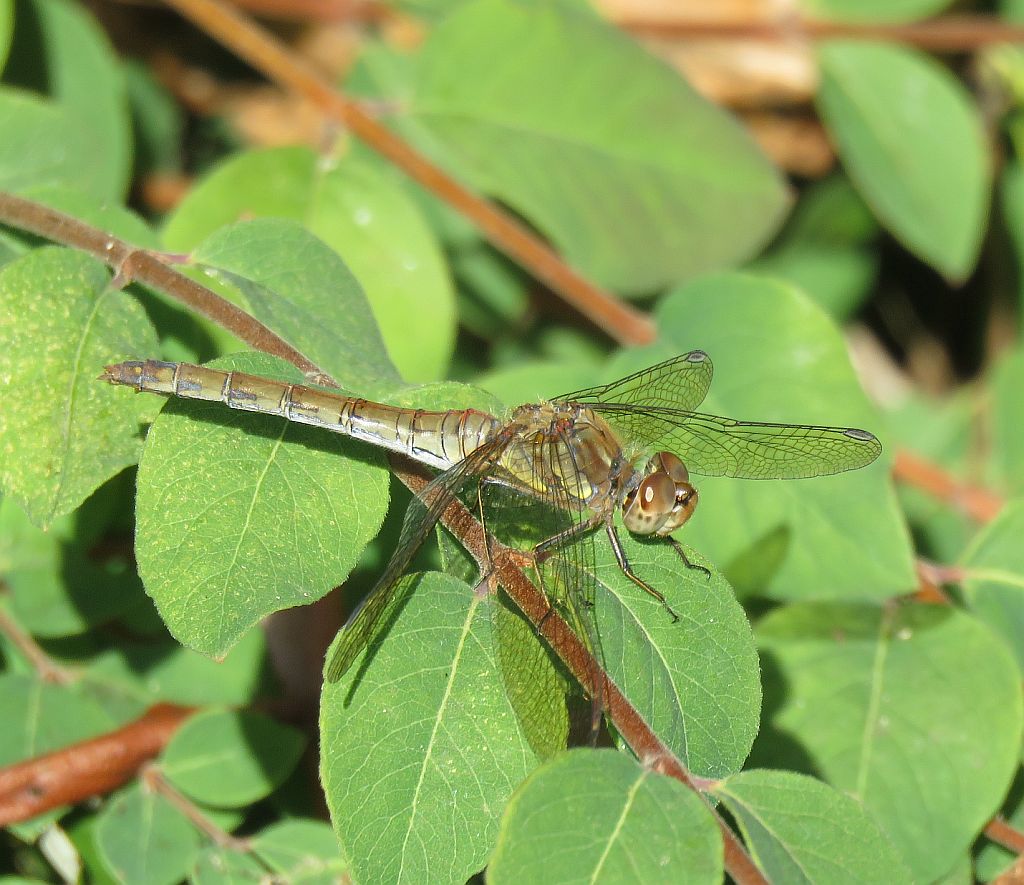


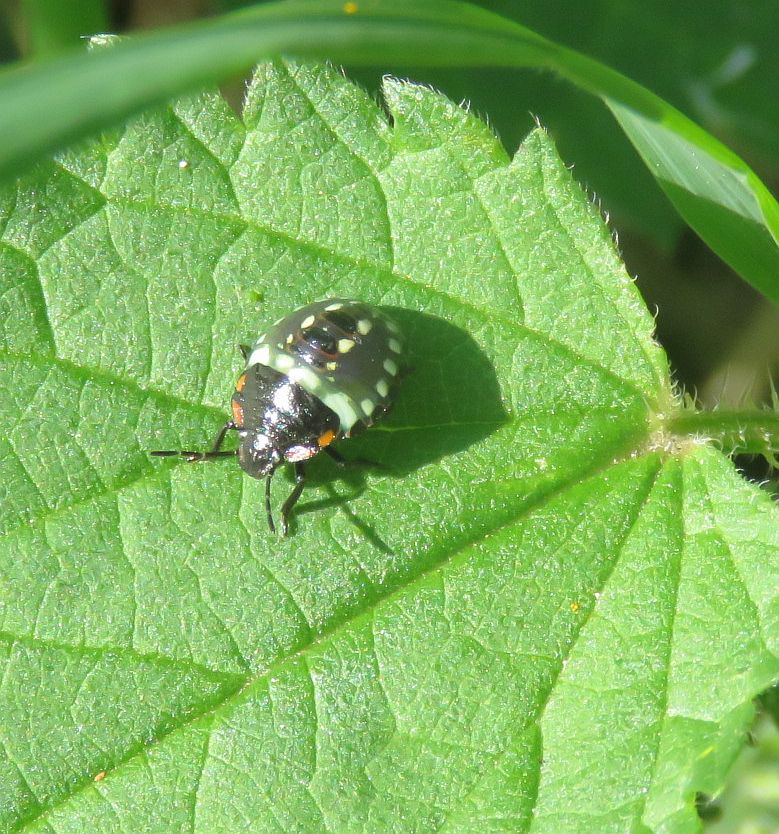
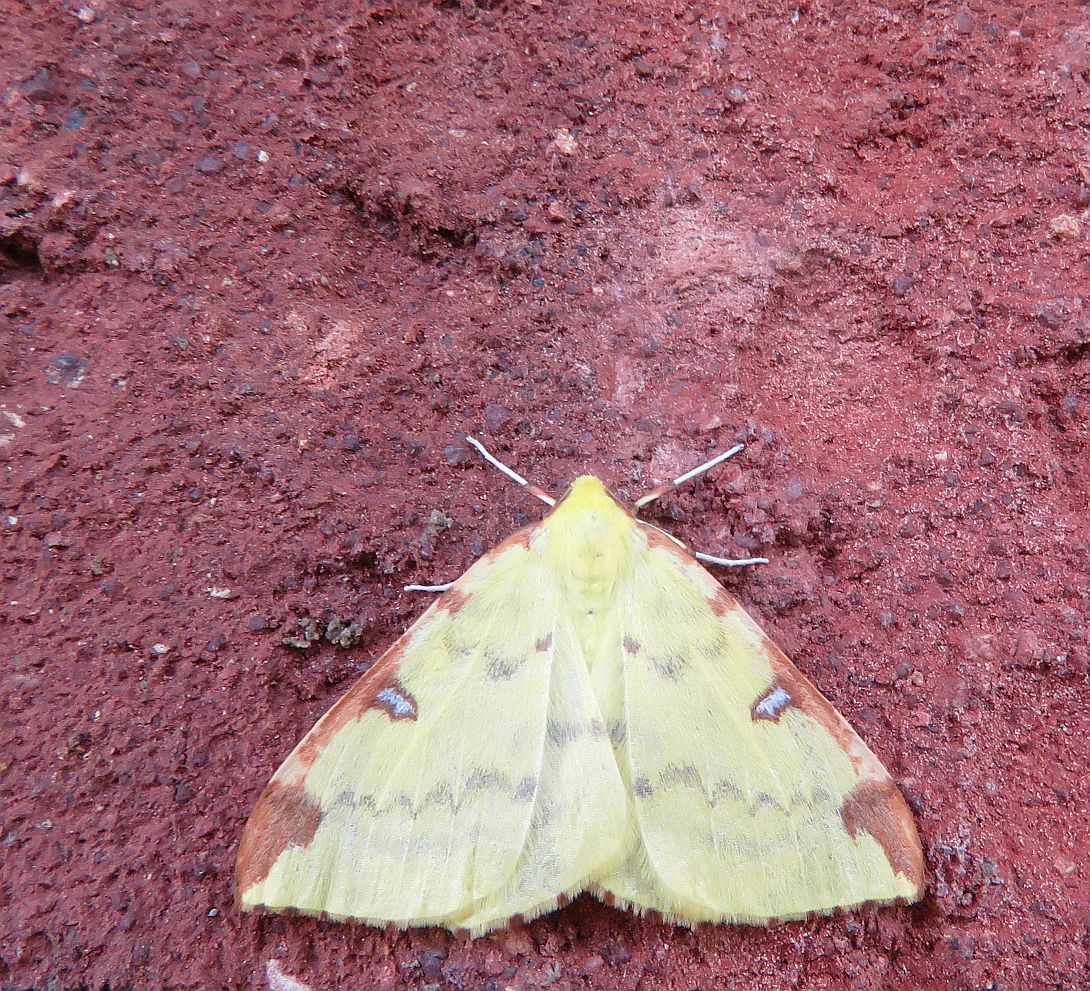
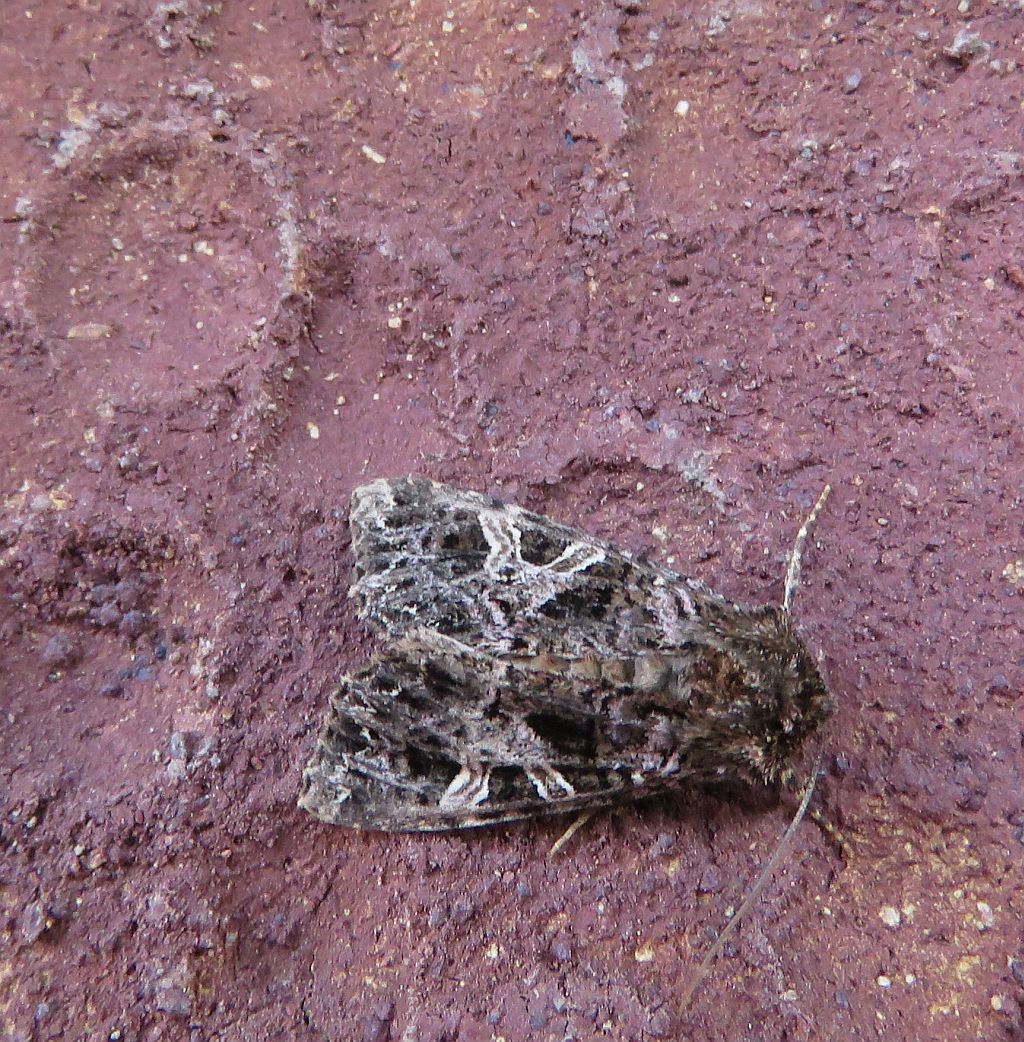
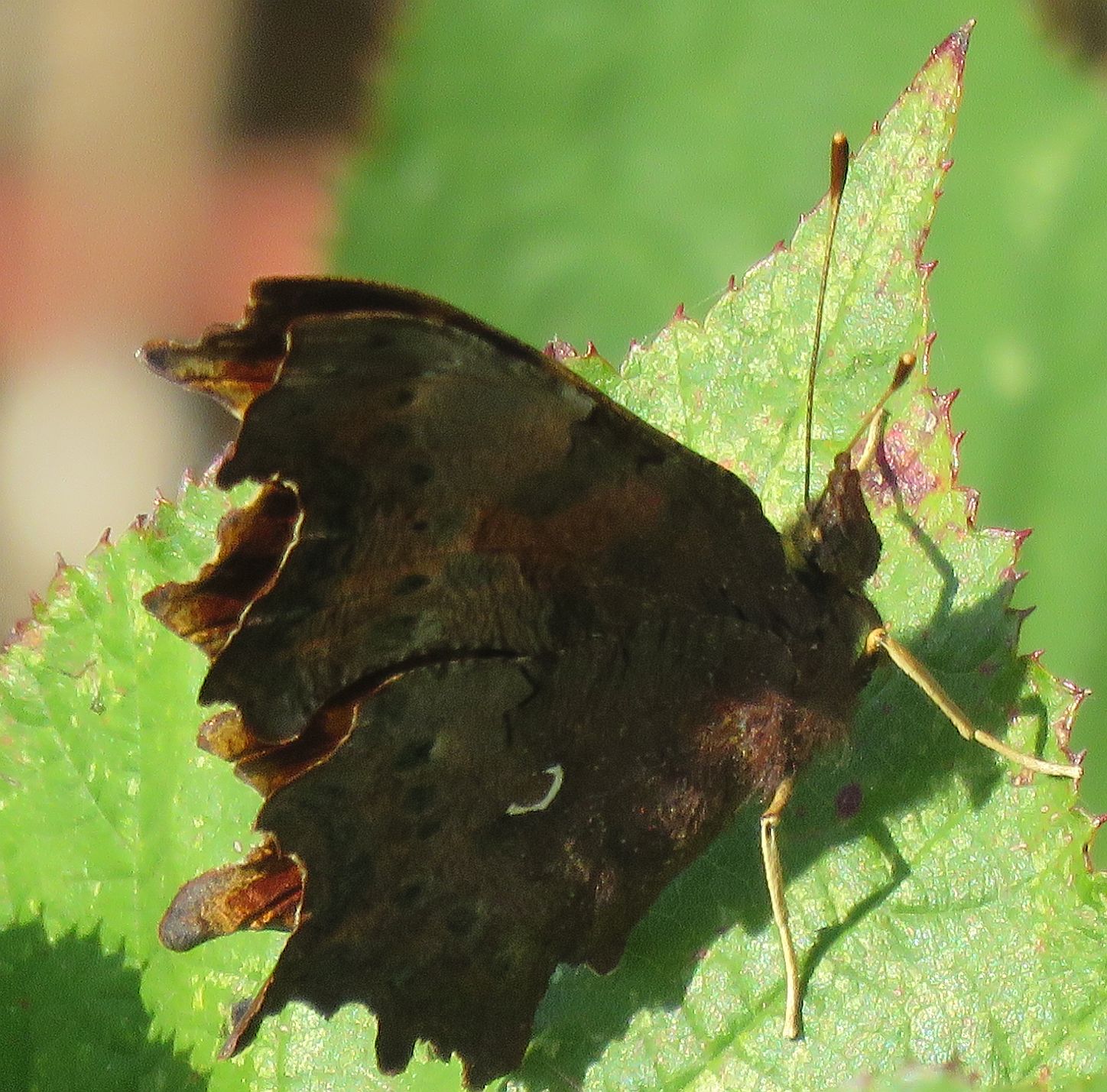

7207.jpg)
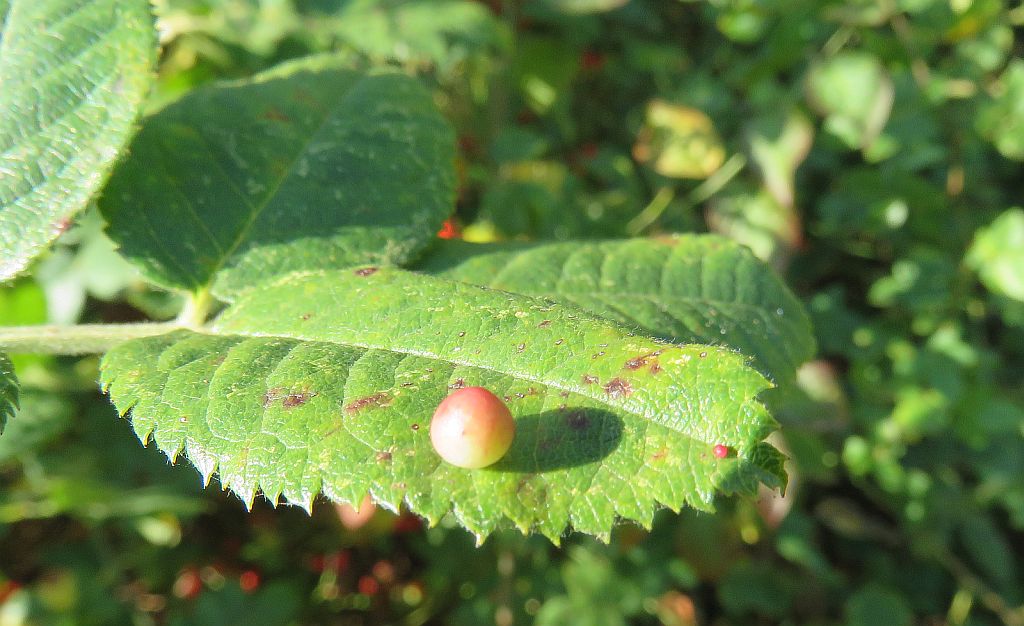
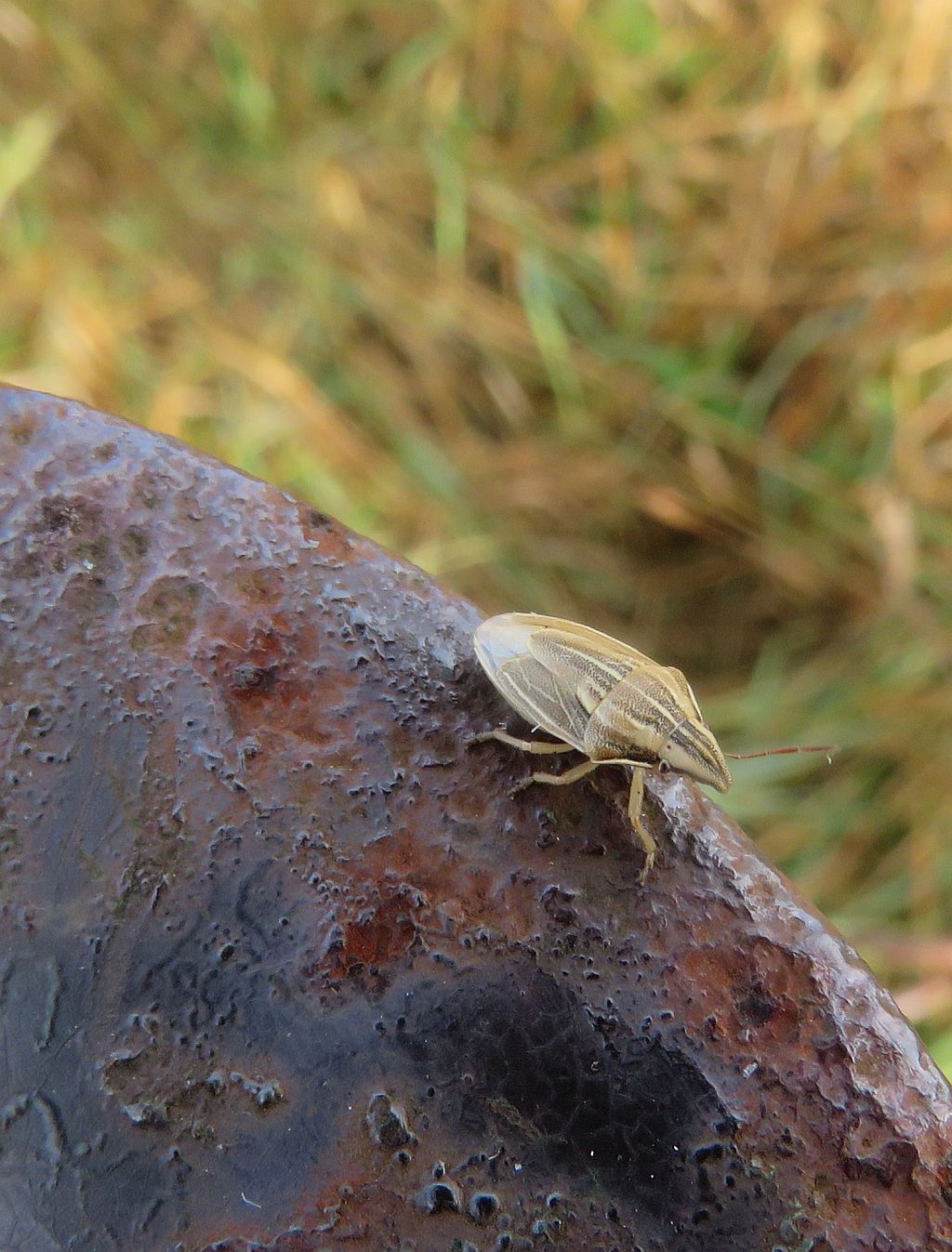
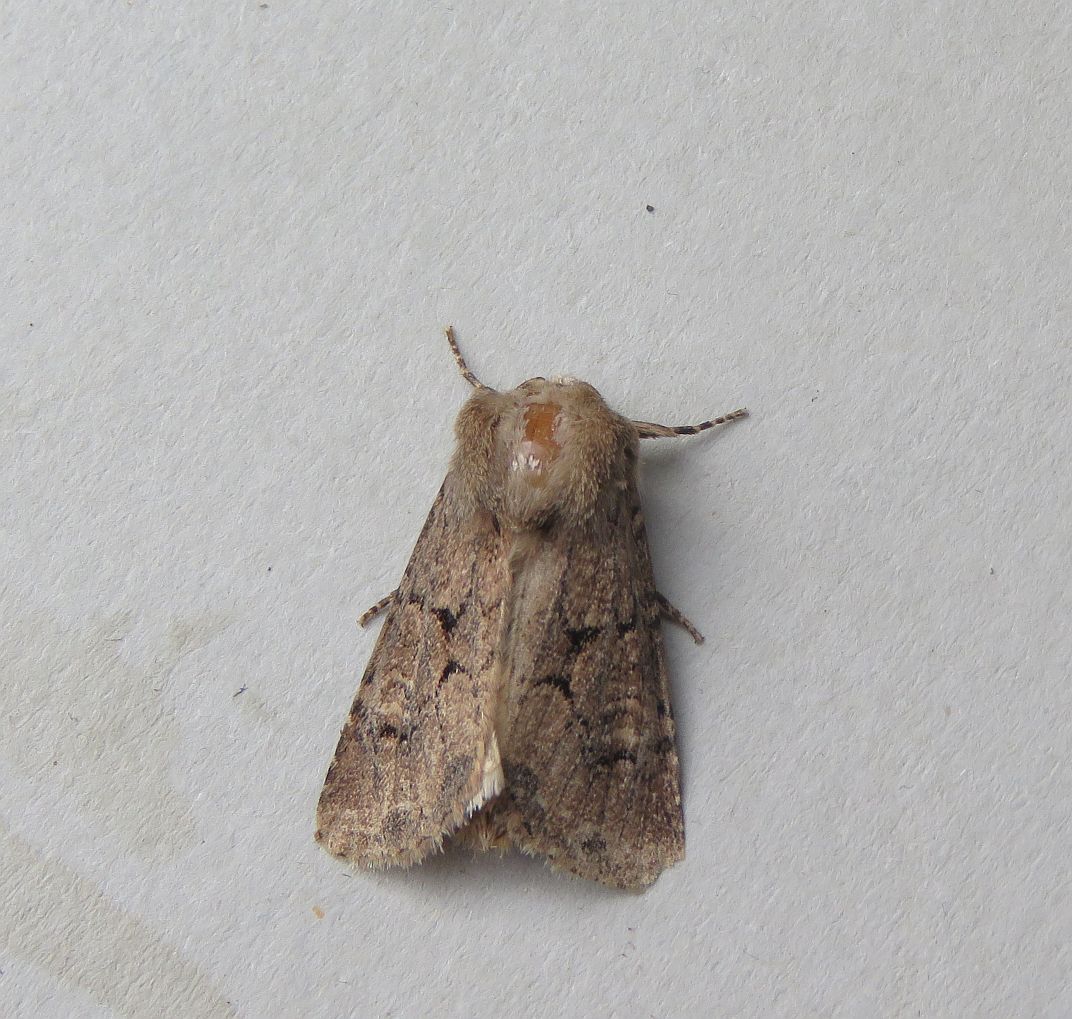
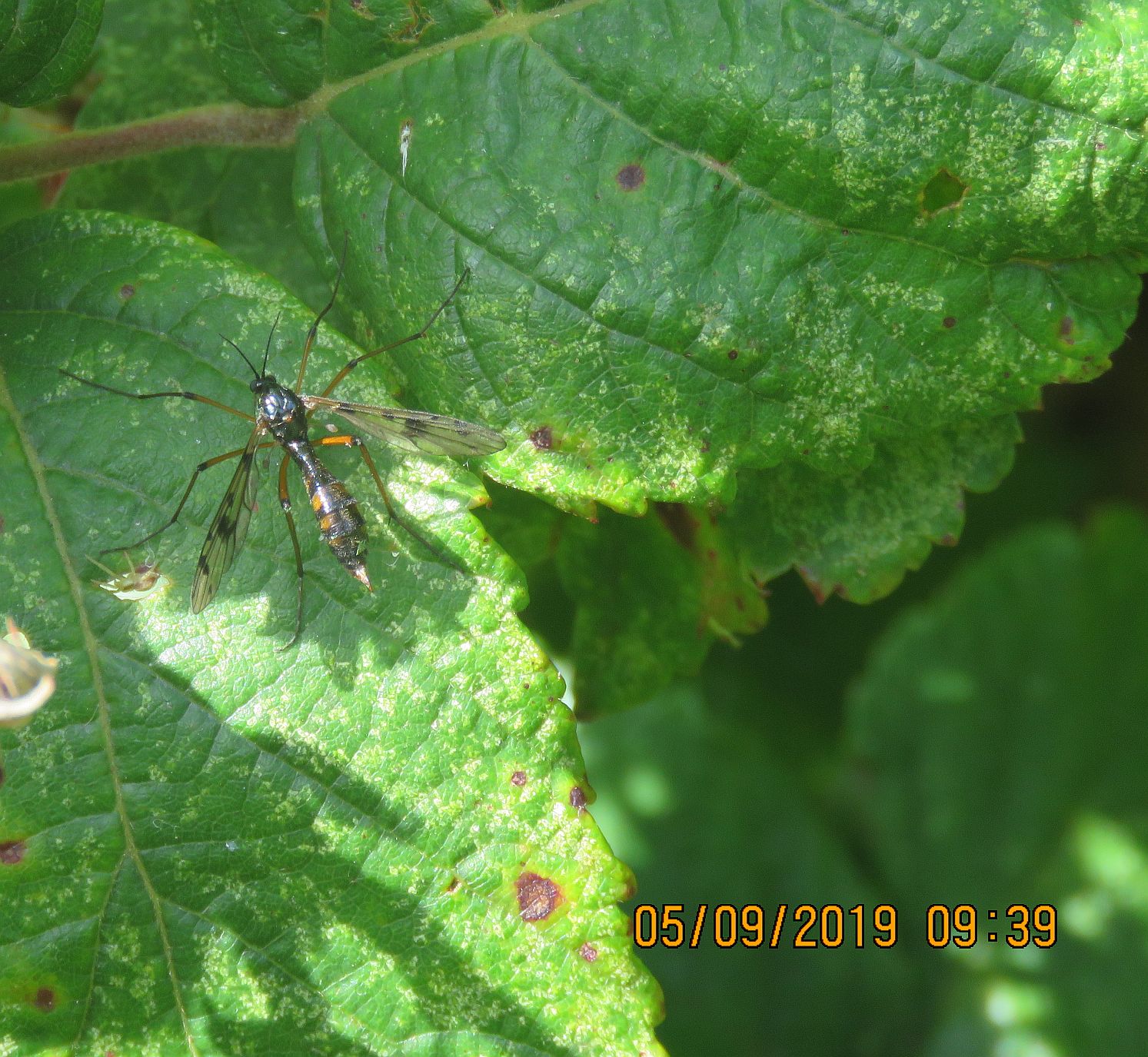
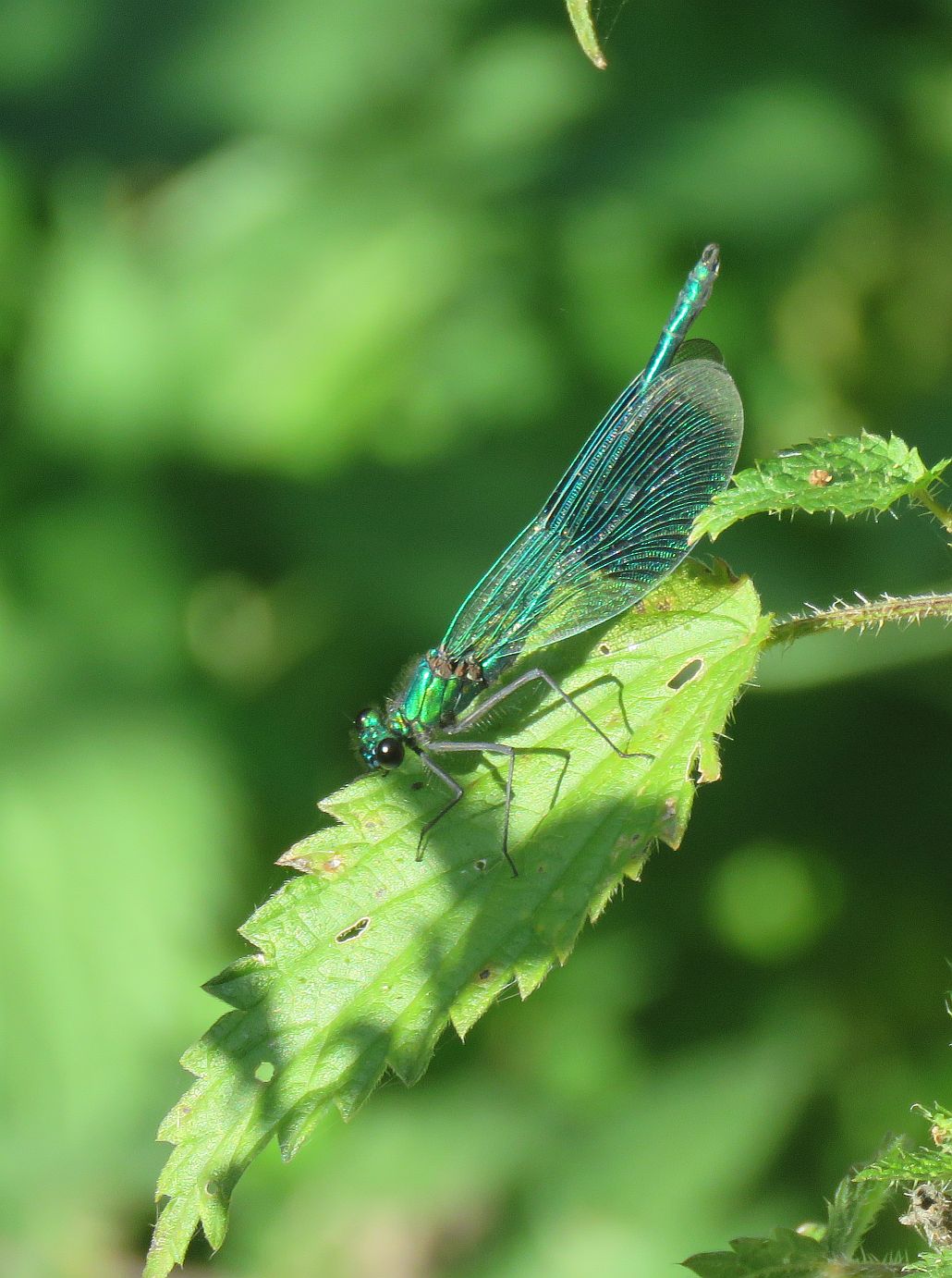
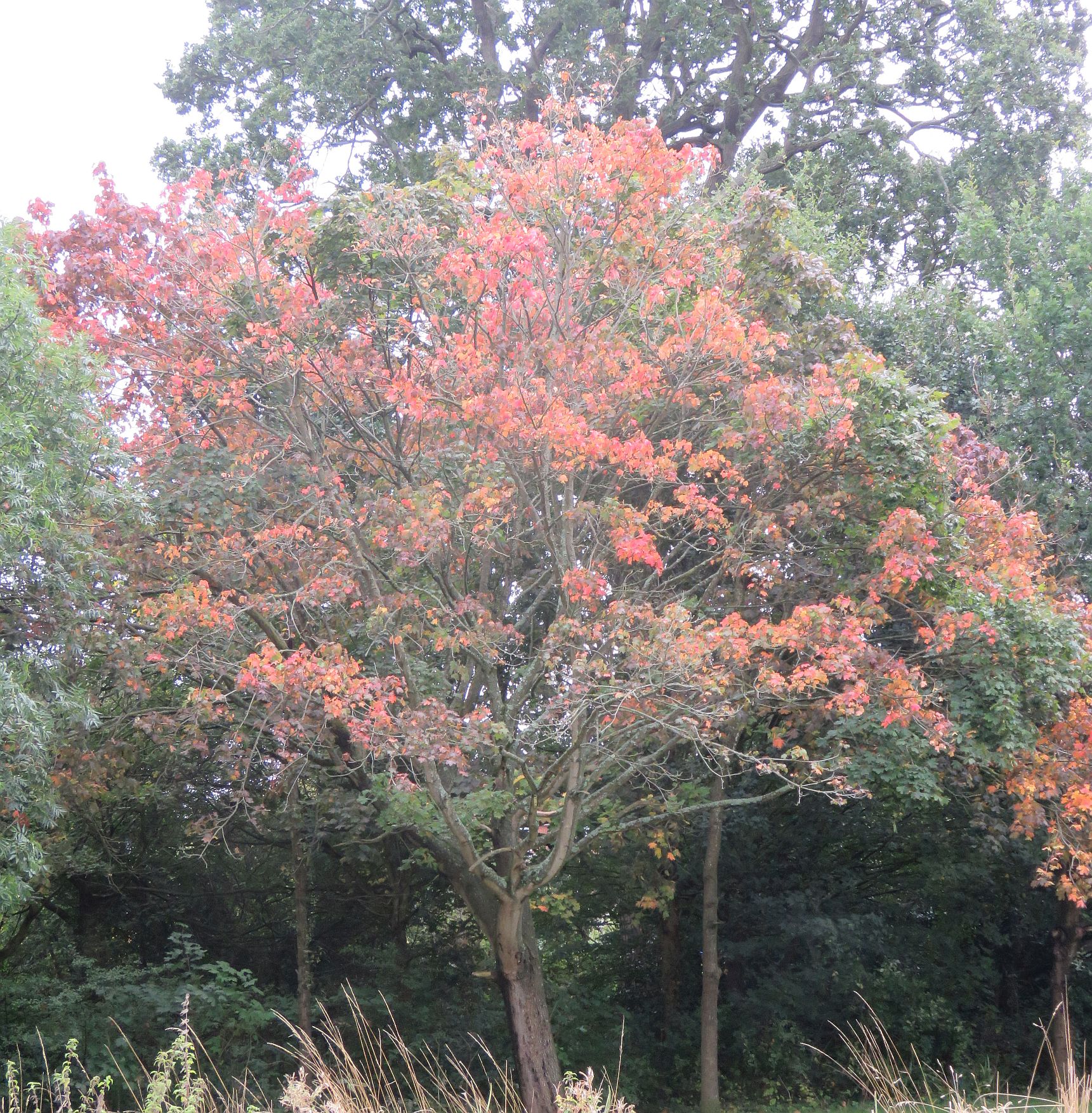
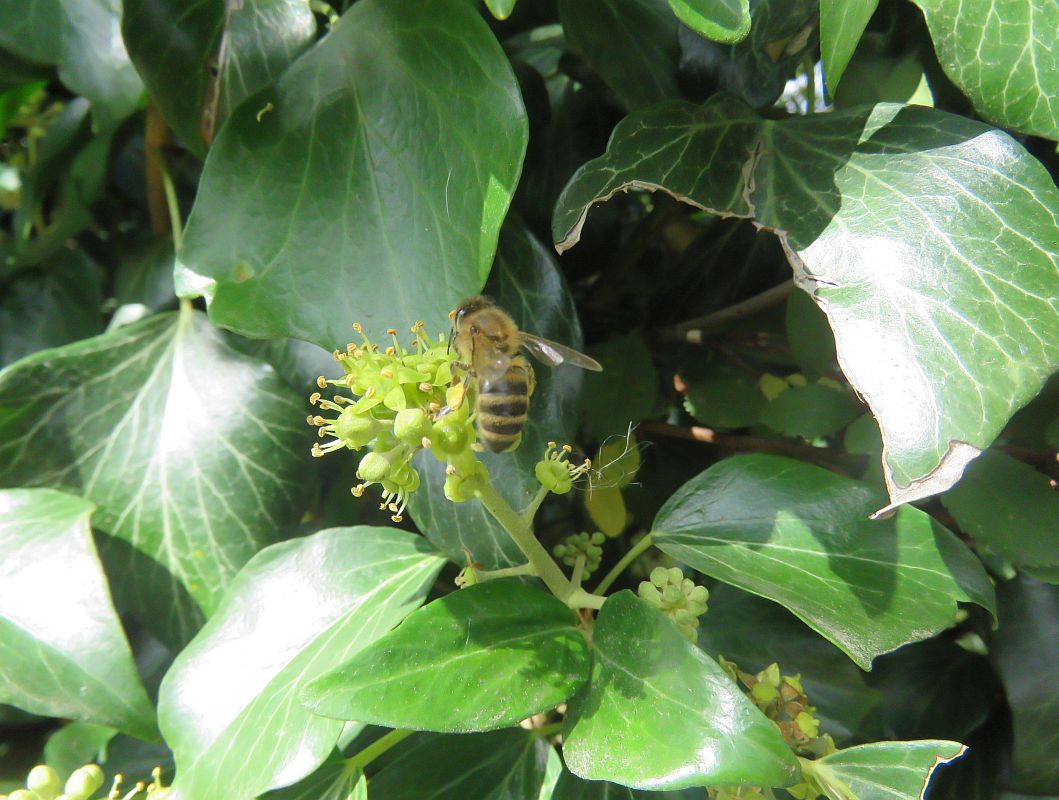
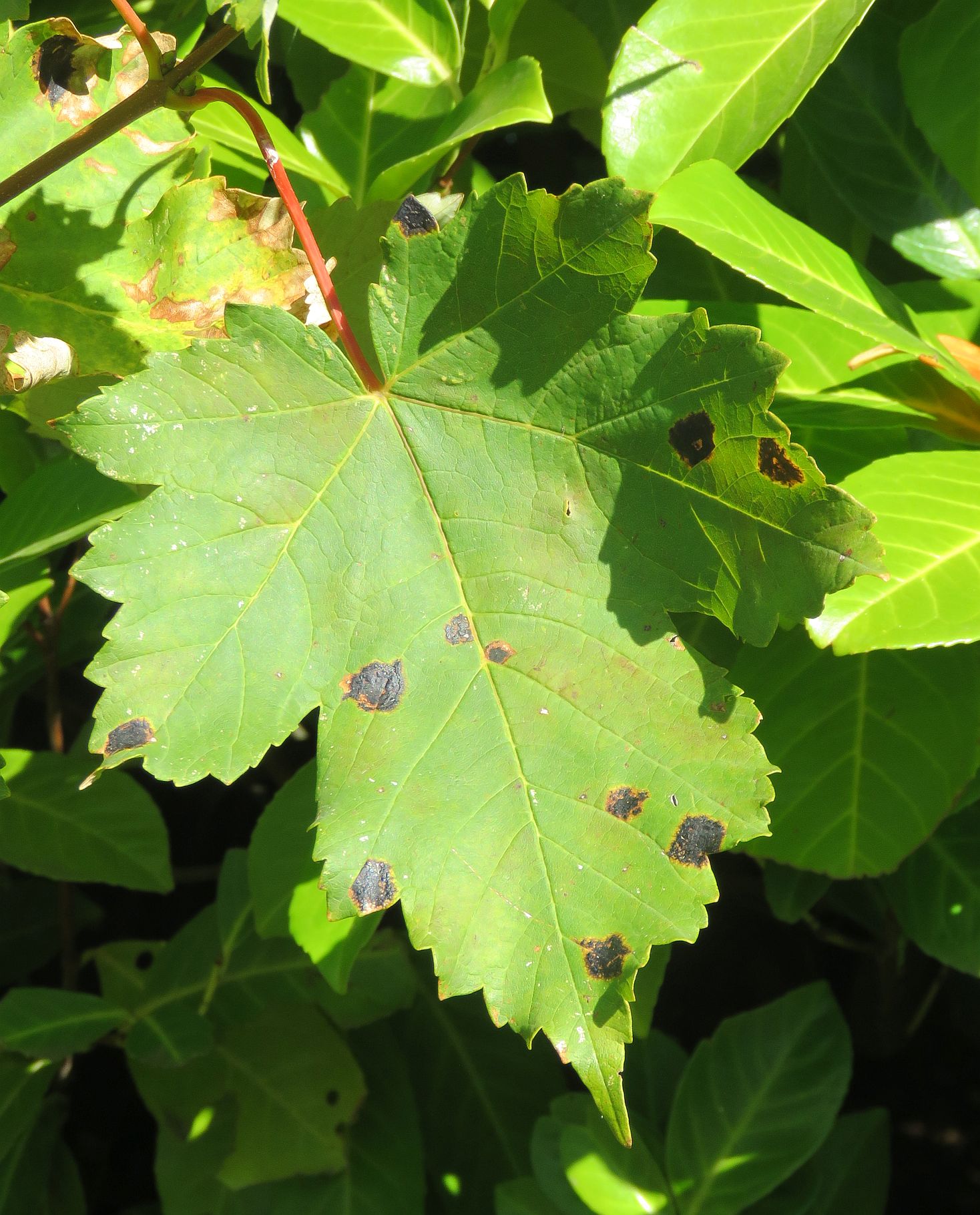

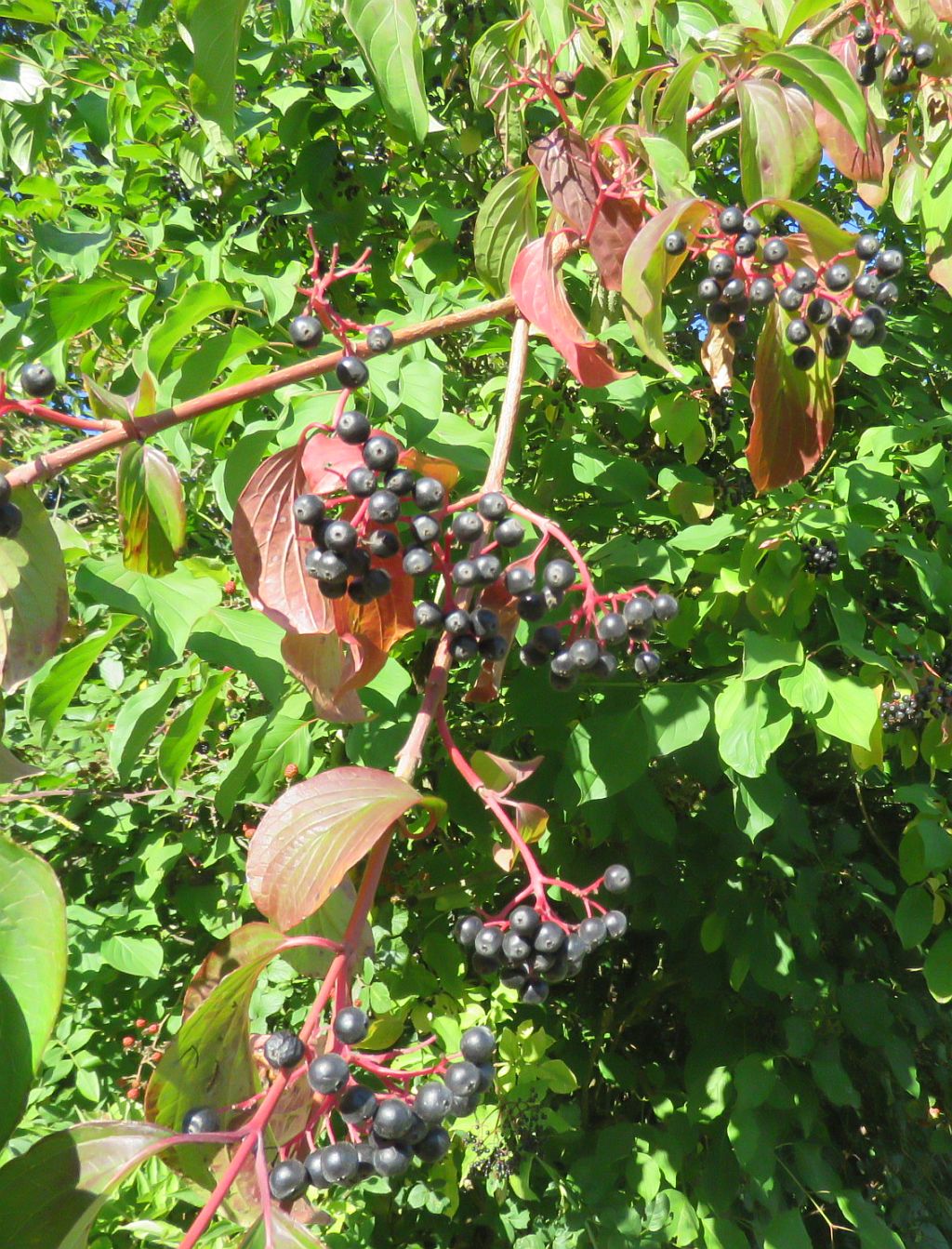
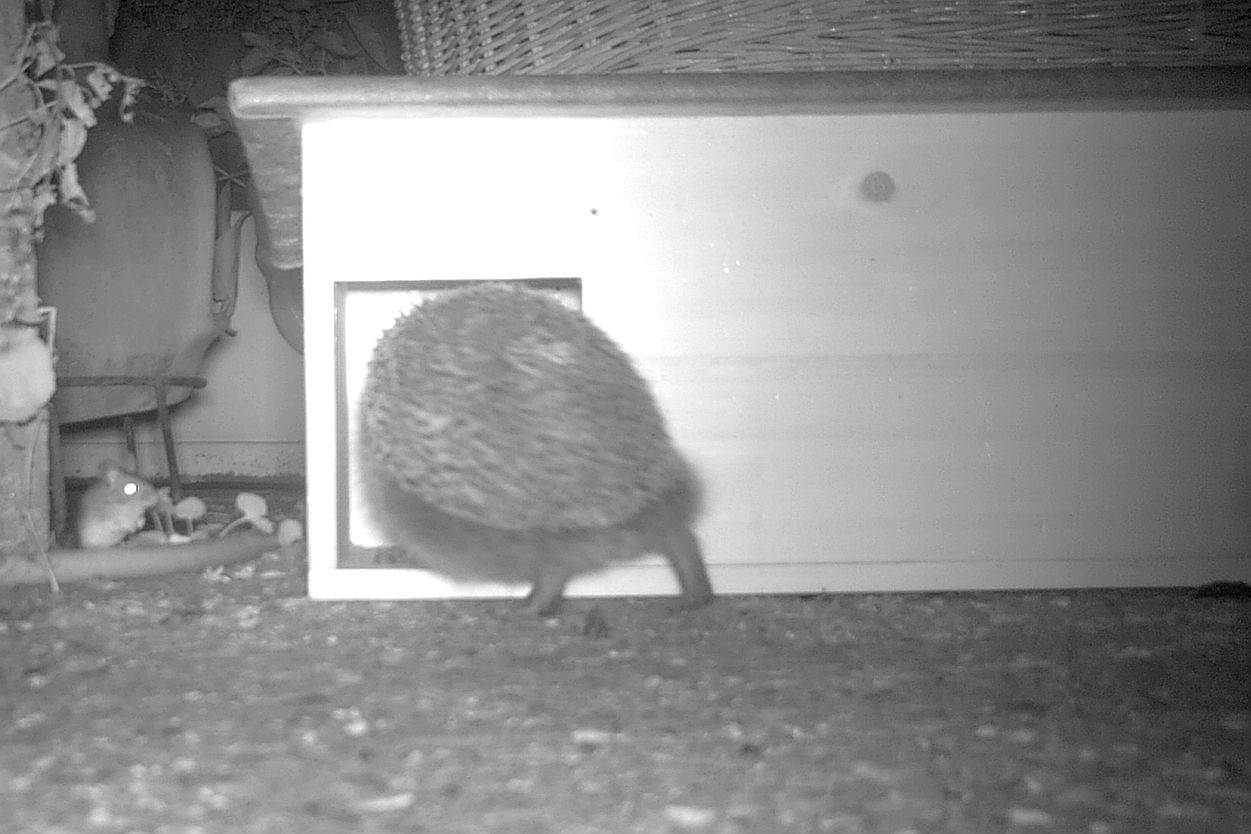

7143.jpg)
7139.jpg)